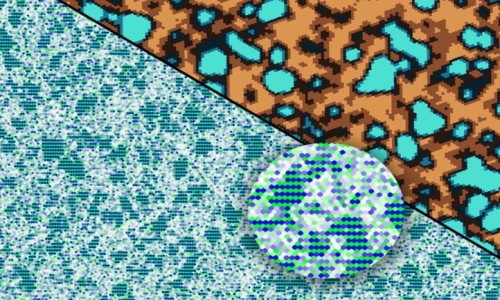


 2:4:22
2:4:22  2025-08-19
2025-08-19  1315
1315

Astronomers at the Pan-STARS Observatory in Hawaii made history in 2017 when they detected ‘Oumuamua, the first interstellar object (ISO) ever observed.
Two years later, the interstellar comet 2I/Borisov became the second ISO ever observed. And on July 1st, 2025, the Asteroid Terrestrial-impact Last Alert System (ATLAS) in Rio Hurtado detected a third interstellar object in our Solar System, the comet now known as 3I/ATLAS (or C/2025 N1 ATLAS).
Like its predecessors, the arrival of this object has fueled immense scientific interest and led to proposals for missions that could rendezvous with future ISOs.
Examples include Project Lyra, the Interstellar Object Explorer (IOE), and the ESA's Comet Interceptor. However, a recent paper led by Prof. Abraham Loeb of Harvard University explores the possibility of rendezvousing with 3I/ATLAS using a mission that has been in space for years.
According to their analysis, NASA's Juno probe could intercept this latest interstellar object once it approaches Jupiter on March 16th, 2026, providing humanity with a close look at one of the most enigmatic classes of objects in the Universe today.
Abraham Loeb is the Frank B. Baird Jr. Professor of Science at Harvard University and the Director of the Institute for Theory and Computation (ITC) and the Galileo Project at the Harvard & Smithsonian Center for Astrophysics (CfA).
He was joined by Adam Hibberd and Adam Crowl, both of whom are distinguished scientists with the UK-based non-profit Initiative for Interstellar Studies (i4is). The paper detailing their proposal recently appeared online and is being reviewed for publication in The Astrophysical Journal Letters.
Loeb, Hibberd, and Crowl are no strangers to ISOs and the possibility of sending spacecraft to rendezvous with them and study them up close. In 2018, Prof. Loeb became something of a household name with the publication of his paper, “Could Solar Radiation Pressure Explain ‘Oumuamua’s Peculiar Acceleration?"
In this paper, and his subsequent book titled Extraterrestrial, he argued that 'Oumuamua may have been an extraterrestrial spacecraft, thus explaining its strange behavior and the way it defied attempts to classify it.
Similarly, Hibberd has earned acclaim for his work alongside Marshall Eubanks on Project Lyra. This proposed mission would "catch up" to 'Oumuamua or future ISOs using lightsail technology and Directed-Energy Propulsion (DEP).
He and Eubanks are also responsible for the Swarming Proxima Centauri proposal, a similar concept that would rely on DEP to send a spacecraft swarm to study the closest rocky planet beyond our Solar System (Proxima b).
Crowl is an independent researcher and propulsion engineer who was previously a member of Project Icarus, a design study for an interstellar probe that built on the legacy of Project Daedalus.
Since 'Oumuamua made its close pass to Earth, scientists have dreamed of the day when a dedicated mission could intercept and study an interstellar visitor. Several missions have conducted sample-return missions to Near-Earth Asteroids (NEAs) in the past decade, including JAXA's Hayabusa and Hayabusa2 probes and NASA's OSIRIS-REx probe.
Since asteroids and comets are essentially material left over from the formation of the Solar System, the study of these samples provides clues about what conditions were present ca. 4.5 billion years ago.
By studying ISOs as they pass through our System, scientists will be able to learn what conditions were present in other star systems without waiting for an interstellar spacecraft to reach them.
But as Prof. Loeb explored in his 2018 paper, the possibility that an ISO could be an artificial object (like a derelict spacecraft) increases the opportunities for scientific research exponentially. Hibberd, Crowl, and Loeb explored similar possibilities regarding 3I/ATLAS in a recent paper.
As they indicate in their study, 3I/ATLAS will reach a distance of about 53.6 million km (33.25 million mi) or 0.358 AU from Jupiter on March 16th, 2026. At this point, a shift in the orbit of the Juno spacecraft would allow it to intercept the path of 3I/ATLAS as it makes its closest approach to the gas giant. This proposal circumvents the challenge of building and deploying a spacecraft to intercept 3I/ATLAS before it makes its closest approach to the Sun (October 29th, 2025) and departs our Solar System.
As Hibberd explained, this allowed them to solve the problem of determining the orbits and velocities of Juno and 3I/ATLAS (aka. the Lambert Problem), but only for one orbital cycle. To measure how close the Juno probe could get to the interstellar comet using minimal propellant, Hibberd employed other tailor-made software.
This consisted of C software he developed using three libraries—including NASA JPL, Navigation and Ancillary Information Facility (NAIF), and Spacecraft, Planet, Instrument, C-matrix, Events (SPICE) software—which allowed the team to produce an accurate prediction of Jupiter and Juno's orbits.
NOMAD software was also used to integrate the motion of all three bodies and determine the minimum velocity Juno needed to generate to intercept 3I/ATLAS.
They also highlight how Juno's suite of instruments could all be used to probe the nature of 3I/ATLAS from a close distance. This includes its near-infrared spectrometer, magnetometer, microwave radiometer, gravity science instrument, energetic particle detector, radio and plasma wave sensor, UV spectrograph, and visible light camera.
The data these instruments provide, ranging from spectra and images to energetic emissions, will address questions regarding the object's composition, telling us volumes about its home system and the conditions present when it formed.
"Our paper is contingent on a remarkable but testable hypothesis that 3I/ATLAS is a functioning technological artifact, to which I and my two co-authors do not necessarily ascribe," Loeb adds.
"Yet, this hypothesis is worthy of a scientific analysis for two reasons: The consequences, should the hypothesis turn out to be correct, could potentially be dire for humanity, and would possibly require defensive measures to be undertaken (though these might prove futile). [Second,] the hypothesis is an interesting exercise in its own right and is fun to explore, irrespective of its likely validity."
However, recent images acquired by the Hubble Space Telescope suggest this possibility could already be off the table. Based on the brightness distribution of the surrounding coma, researchers have estimated that the nucleus has an effective radius of less than 2.8 kilometers (~1.75 mi).
However, all questions regarding its true nature will be resolved once a) 3I/ATLAS gets closer to the Sun and begins releasing gases through sublimation, or b) the Juno probe has a chance to examine it up close.
Regardless of the outcome, the results will certainly be fascinating and will tell us a great deal about what lies beyond the Solar System.
Reality Of Islam |
|

By applying

Stanford, C

A new study

Researchers
 9:3:43
9:3:43
 2018-11-05
2018-11-05
10 benefits of Marriage in Islam
 7:5:22
7:5:22
 2019-04-08
2019-04-08
benefits of reciting surat yunus, hud &
 9:45:7
9:45:7
 2018-12-24
2018-12-24
advantages & disadvantages of divorce
 11:35:12
11:35:12
 2018-06-10
2018-06-10
 6:0:51
6:0:51
 2018-10-16
2018-10-16
 8:3:0
8:3:0
 2018-06-21
2018-06-21
 7:26:19
7:26:19
 2022-04-08
2022-04-08
 10:35:40
10:35:40
 2022-05-26
2022-05-26
 2:2:13
2:2:13
 2022-10-08
2022-10-08
 3:43:50
3:43:50
 2022-11-05
2022-11-05
 12:10:56
12:10:56
 2022-11-17
2022-11-17
 6:14:3
6:14:3
 2023-01-18
2023-01-18
 5:41:46
5:41:46
 2023-03-18
2023-03-18
| LATEST |